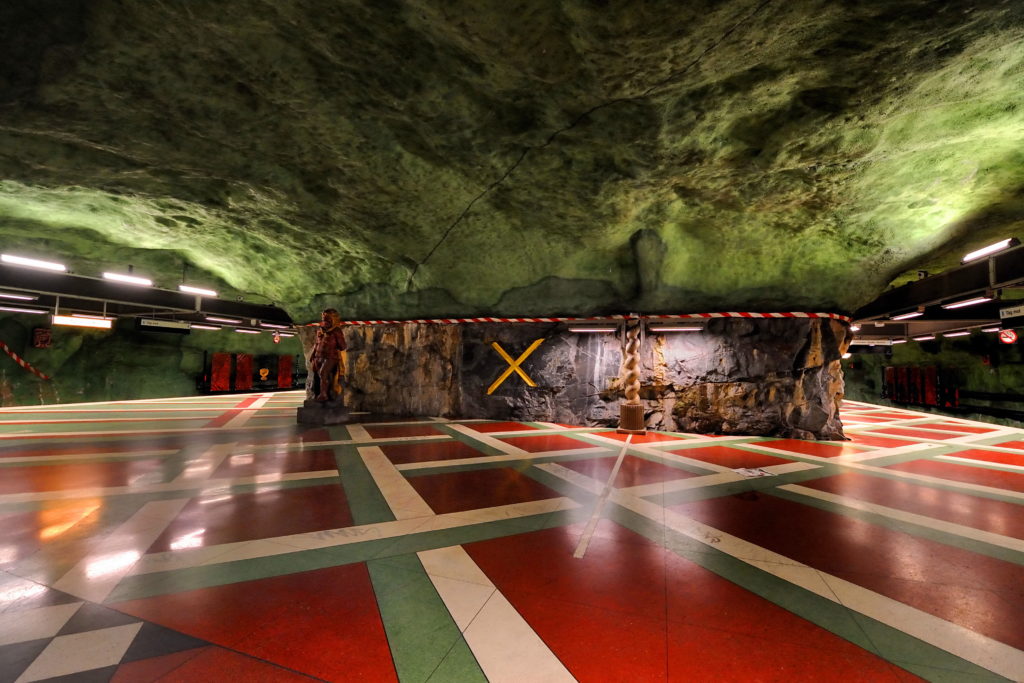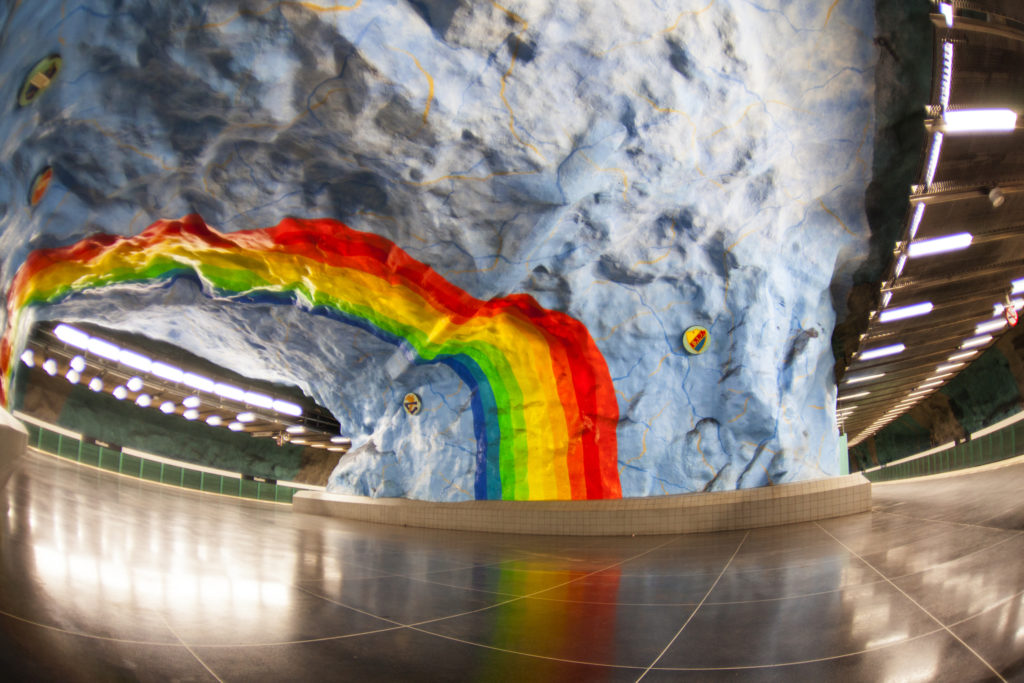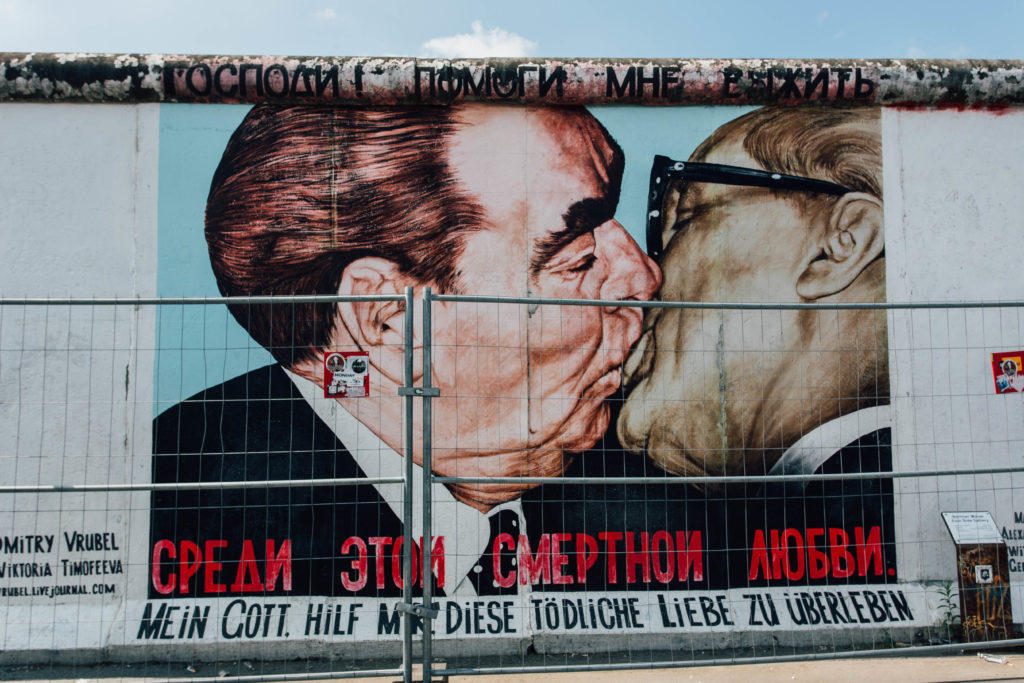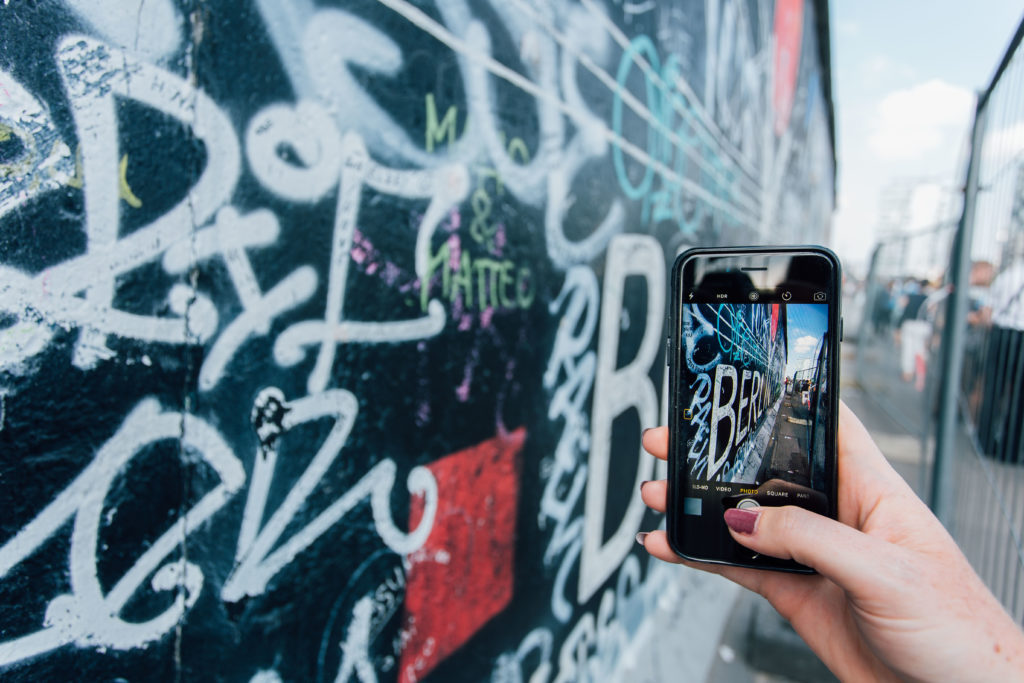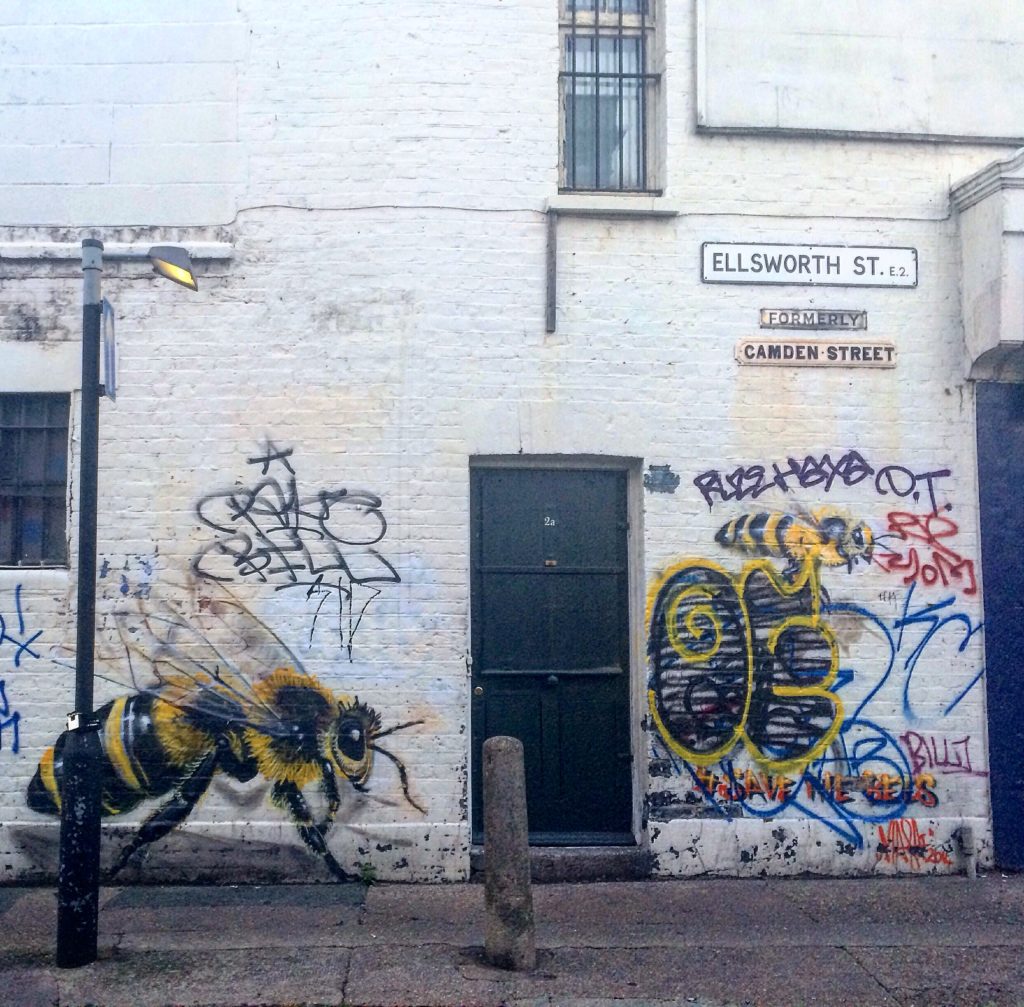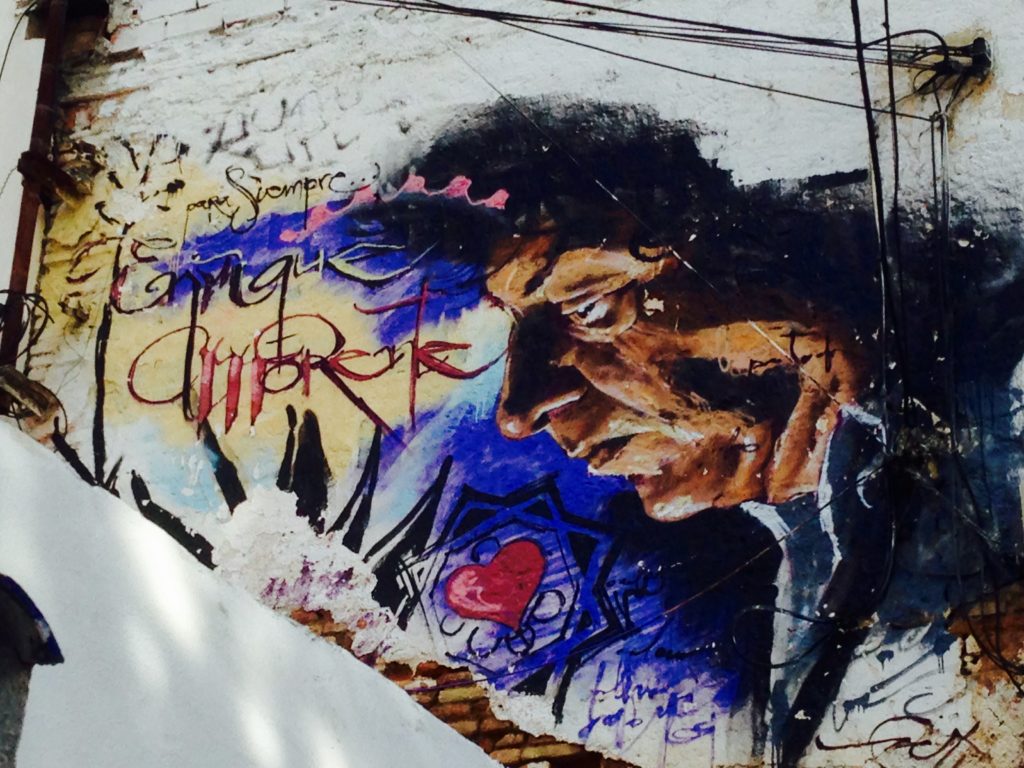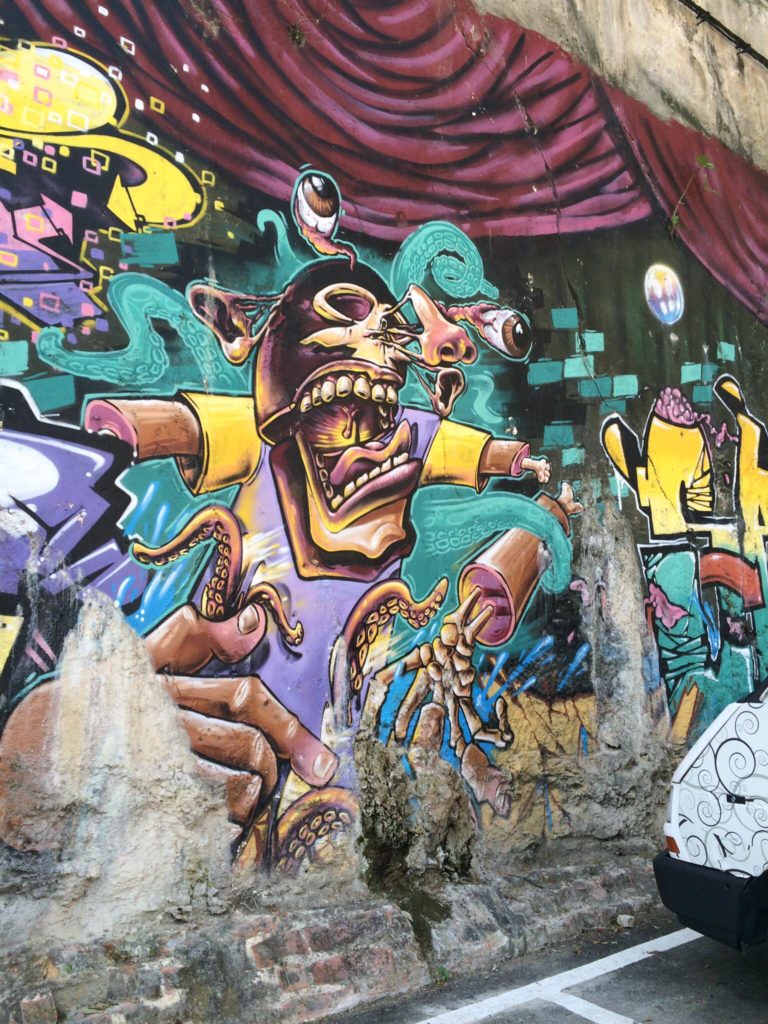The evolution of street art has been as diverse as it has been illegal. Previously thought of as vandalism, the street art movement is now widely celebrated; from pieces commissioned to beautify buildings, to those that have deep roots in political and social criticism. We can explore a city’s history, not by queuing for museums and standing around galleries, but by walking down cobblestone roads and underground metros, tracing back decades of history and raw expression in artwork displayed on the streets. In fact, Europe has some of the best street art in the world. Here are a few of our must-see’s…
Stockholm, Sweden
The underground art scene in Stockholm is just that: underground. The city is home to the world’s longest art gallery, spanning 70 miles of metro line with carvings, paintings, mosaics, and sculptures. Stockholm’s street art movement came about in a 1950s post-war cultural boom, when the city was expanding and people were moving into the suburbs. Believing art should not be isolated, but rather a part of the city, the metro that connected Greater Stockholm to the centre was like a blank canvas that could deliver art to everyone.
From feminist movements of the 60s, conservation messages of the 80s, to pieces created just to make us smile, each artist had their own agenda, which makes travelling through the Stockholm metro like exploring time capsules from different eras. No queues or extortionate entry fees here; your only ticket is your travel card that takes you on a journey to see Stockholm like you’ve never seen it before.
Berlin, Germany
Berlin has been named UNESCOs City of Design – and it’s no surprise why. The city is steeped in a rich history of politics and conflict, which breeds the culture of street art expression. Hardly able to turn a corner without bumping into a mural or stencil, Berlin is also full of paste up pieces. These have much shorter life spans, which ensures the city is constantly evolving and the street art messages are as contemporary as they are temporary.
Recreating The Fraternal Kiss has become an unofficial bucket list item for almost anyone photographing the wall. Like the saying goes, when in Berlin, kiss as the Democratic Republicans do.
Berlin has the largest concentration of street art in Europe, with the most famous being the East Side Gallery, displaying over 100 works of art by artists from around the world. While art is scattered all over the city, the political roots of many pieces draw them to places of political significance, making the Berlin Wall the perfect canvas for artists to express their opinions and criticisms of everything the wall represented. Its vibrant street art scene is just one addition to the city’s rich mosaic of culture, making Berlin a destination that is begging to be explored.
London, England
London is arguably the culture capital of Europe, so naturally it’s a city in which revolutionising art movements will thrive. Many famous Banksy pieces are plastered around London, with concentrations in many of the alternative parts of Hackney, Shoreditch, and Camden. Banksy was involved in London’s first street art battle in Camden, and organised a street art festival in Leake Street, a disused railway tunnel behind Waterloo Station. Since then it has become a hive for street artists, which led the tunnel to being designated a legal space for street art and graffiti.
Dotted throughout Shoreditch you’ll see pieces commissioned by businesses and galleries to turn their ‘boring’ buildings into trendy works of art. In Hackney you’ll find works such as #savethebees promoting environmental conservation and spreading public awareness. London is a big city with a bigger population – whatever your taste in art (or if you didn’t know you had one) you’ll discover it on the streets.
Granada, Spain
Giving Gaudi a run for his money in Barcelona, Granada, a.k.a. one of the oldest cities in Spain, actually has one of the country’s richest urban art scenes. Raúl Ruíz, “El Niño de las Pinturas” (The Painting Kid), is the city’s most famous street artist. Amongst all the pomegranates (you’ll understand when you’re there) you’ll find Ruíz’s murals and inspirational quotes dotted around the city, providing an incredible contrast of historic buildings and new age expression.
One of his most famous pieces is a mural dedicated to Joe Strummer, the late frontman of The Clash. This one probably doesn’t have some underlining political message – we’re guessing he just really likes Joe Strummer. It’s easy to find tours of Granada’s street art, where locals take you to hidden spots and places you’re likely to miss on your own. The guides can take you all the way up to Granada’s caves, which have a history rooted in segregation but are now where you’re most likely to find a hippie commune.
Lisbon, Portugal
You never have to stroll far to find street art in Lisbon – it’s the first city in the world that has established a government department dedicated to supporting urban art. The CRONO project of 2010 was a government initiative that encouraged artists to transform Lisbon’s derelict buildings into beautiful works of art. After suffering from a recession at the time, many buildings were left abandoned. Thankfully, the government wanted to breathe new life into their heritage buildings rather than let them crumble at the hands of developers, a move we’re all grateful for and one that helped launch Lisbon to the top of Europe’s list of must-see urban art scenes.
Talk to us, where else is home to the BEST art in Europe? Start exploring here.

